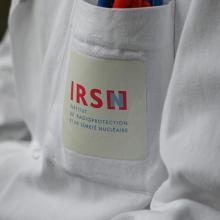Contact
- Marc Benderitter
- Maâmar Souidi

The PRIODAC research project (Prophylaxis répétée par l'iode stable en situation accidentelle - Repeated stable iodine prophylaxis in accident situations), coordinated by IRSN, aims to determine the modalities of repeated stable iodine administration. The aim is to ensure the efficacy and safety of this new dosage for different age groups in the population (infants, children, adults, pregnant women and the elderly). PRIODAC is a project financially supported by the French National Research Agency (ANR) as part of the Investissements d'avenir "nucléaire de demain" RSNR 2012 program, launched in 2014 for an initial 5-year period, and extended until 2022.
Completion dates : March 2014-February 2022
Leader : IRSN
Partners : CEA, Université de Nice Sophia-Antipolis, Université d'Aix-Marseille, Pharmacie Centrale des Armées
Reactor core accidents at nuclear power plants can lead to radioactive substances being released into the environment in the form of gas and aerosols, particularly caesium-134, caesium-137, iodine-131 and other short-lived isotopes of iodine. These particles and aerosols can be inhaled or ingested by populations exposed to the plume. The authorities have various measures for mitigating this risk: evacuation, sheltering indoors, dietary restrictions and stable iodine prophylaxis.
Radioactive iodine species can accumulate very quickly in the thyroid, which can lead to an increased cancer risk for the most vulnerable, especially infants and children. This exposure/effect relationship was demonstrated after 1991 in the areas most severely contaminated by fallout from the Chernobyl disaster, in Belarus, Russia and Ukraine. In France, the “iodine policy” recommends a single administration of potassium iodide (KI) tablets, which can be repeated once if it is impossible to evacuate the population. To be effective, these have to be given ideally between two hours before exposure and up to six hours after. Until now the marketing authorisation (MA) for the iodine tablets has not allowed for repeated administration of iodine beyond two doses.
Since the Fukushima accident, it seems necessary to consider the possibility of repeated administration of stable iodine for people in an area with repeated or prolonged radioactive releases while awaiting evacuation, or where evacuation is impossible. This is what the PRIODAC programme seeks to address.
Its focuses have been undergirded by the research needs identified by the World Health Organization (WHO) in its 2017 guidelines (1).
Since its launch in March 2014, the PRIODAC project has (2) :
The authorities responsible for defining the iodine policy are and will continue to be informed of the results of the project. These new French recommendations derived from the PRIODAC project could serve as an example for harmonising "iodine policies" at both European and international levels.
A PRIODAC project extension granted by the ANR (2019-2022) will make it possible to determine whether repeated prophylaxis is possible for pregnant women, and define the appropriate dosage regiment. Given the marketing authorisation variation granted in early 2020, conditions for the paediatric population still need to be approved following regulatory toxicology tests.
Laboratories : LRAcc - LRSI - Research support group : GSEA -

Through its research activities, the LRAcc develops operational methods and tools for the diagnosis and prognosis of radiation-induced organ damage, including the a posteriori reconstruction of absorbed doses by biological dosimetry.

The laboratory's activities contribute to a better understanding of the effects of radionuclides on humans, to improving treatment methods after internal contamination and to better assessing exposure.

The GSEA supports in vivo exploration platforms as part of IRSN's research into the biological effects of ionizing radiation. Its main aim is to ensure compliance with the regulations and ethical principles governing this research.